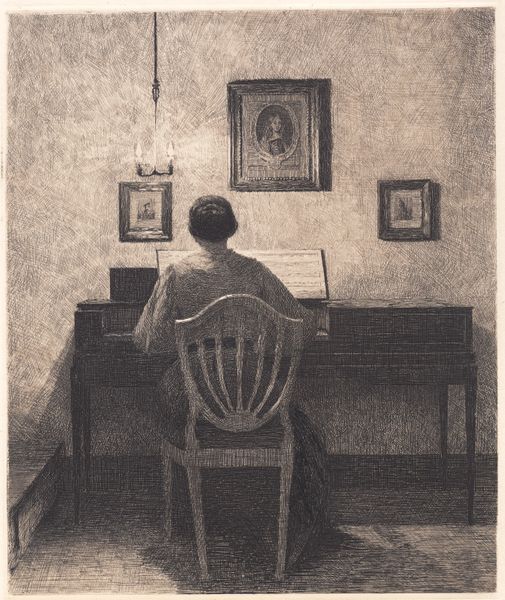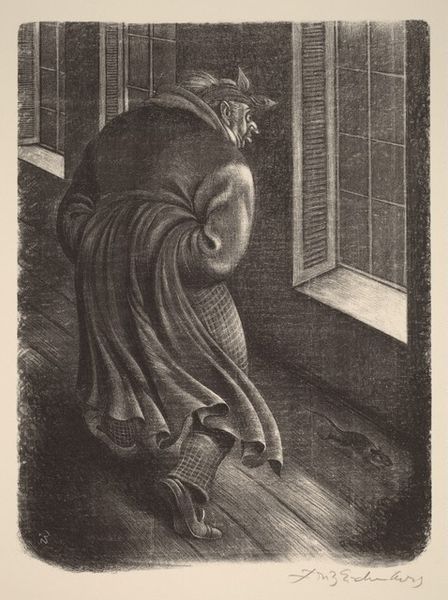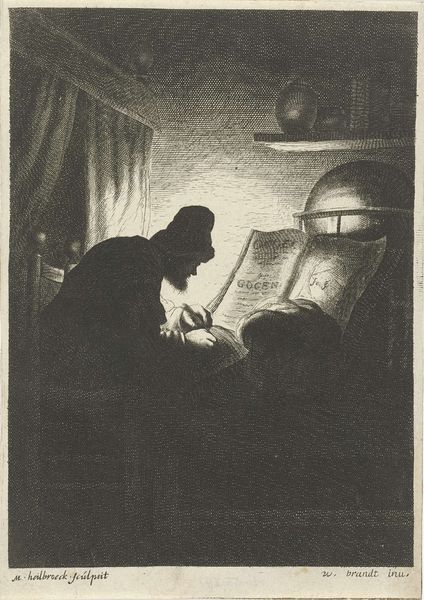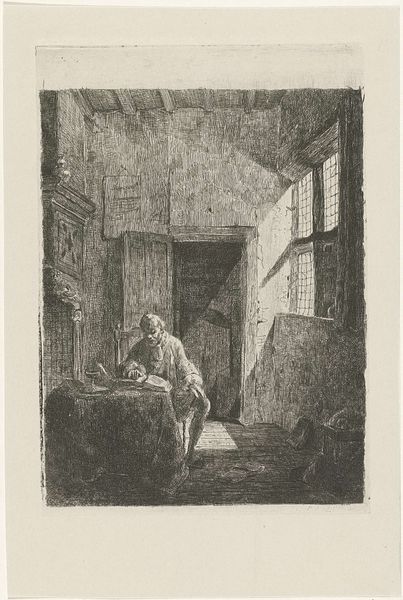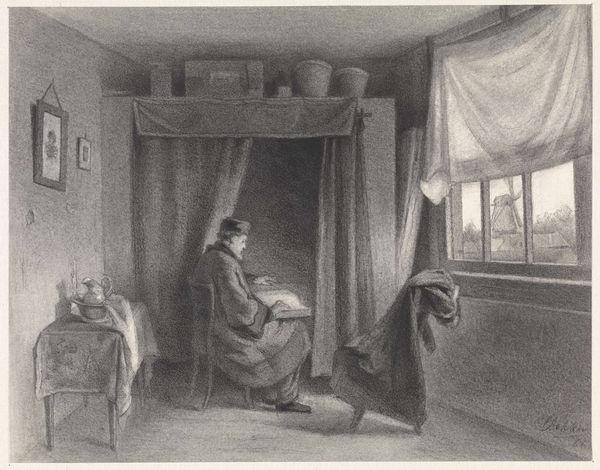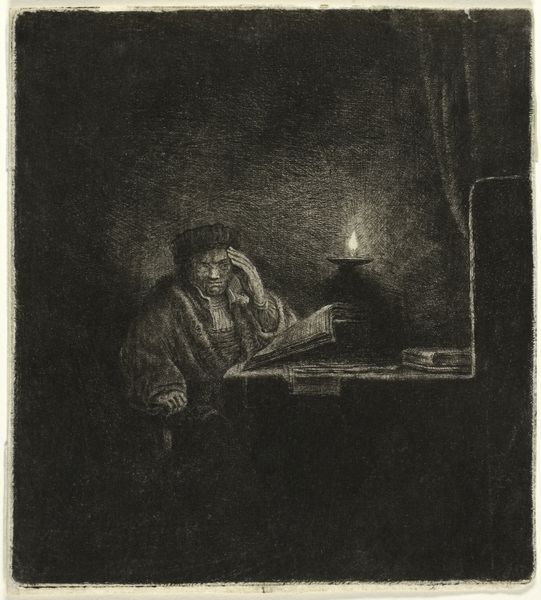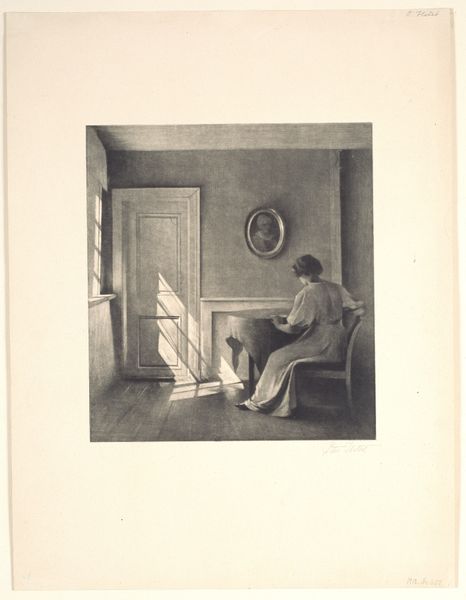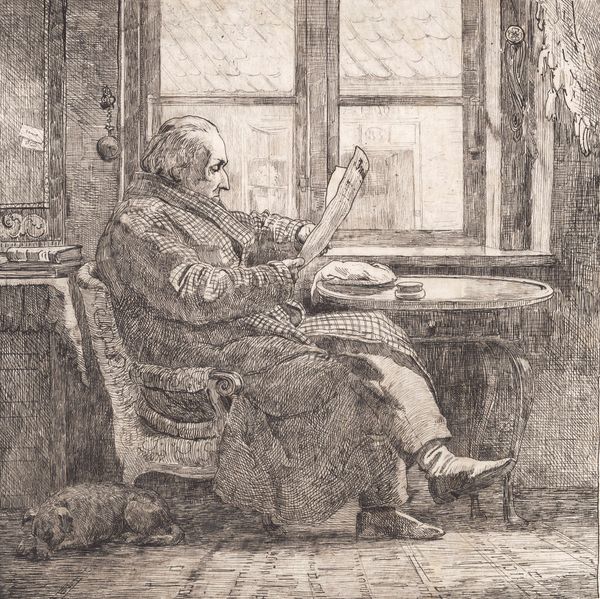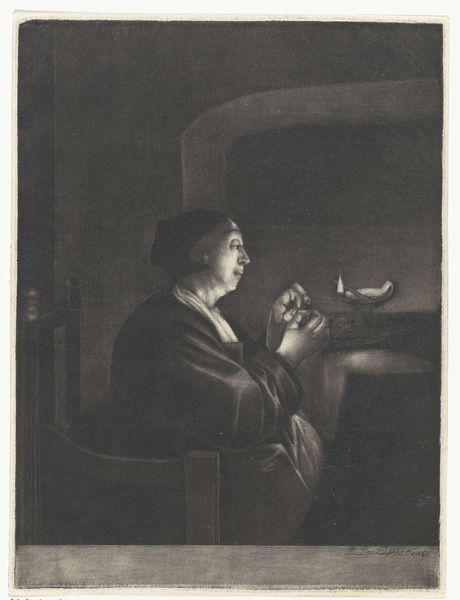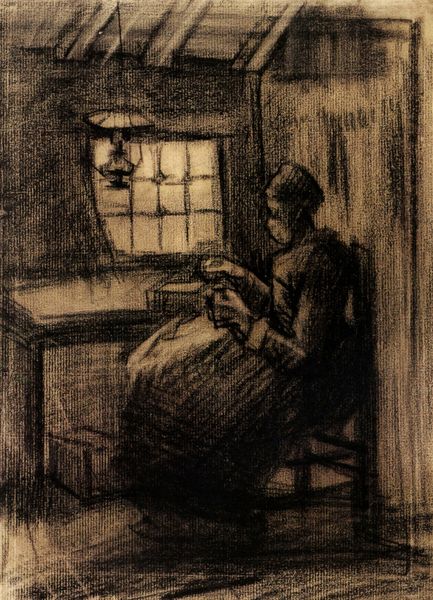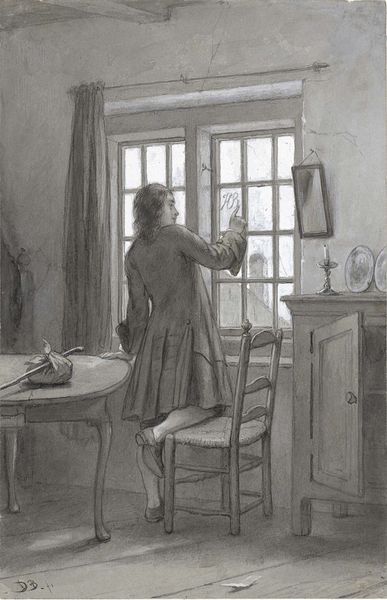
drawing, print, graphite
#
portrait
#
drawing
# print
#
charcoal drawing
#
graphite
#
cityscape
#
portrait drawing
#
modernism
#
realism
Dimensions: image: 274 x 216 mm sheet: 415 x 330 mm
Copyright: National Gallery of Art: CC0 1.0
Editor: So, here we have Harry Brodsky's "The City," created around 1940. It's a drawing, I believe a print made with graphite and maybe charcoal. It feels very… still. Melancholy, even. The man gazing out the window, the empty teacup… What stands out to you about this work? Curator: Notice the composition. The artist has meticulously arranged forms to construct meaning. Observe the window: it serves as a framing device, dividing the interior, the personal space of the man, from the exterior, the cityscape, a symbol for modernity. The city looms indistinct, ethereal. Editor: So you see a real contrast between the man’s personal world and the world outside? Curator: Precisely. But observe the artist's use of light. It streams in through the window, illuminating the scene yet rendering the man himself partly in shadow. This isn't merely representational; it's a deliberate modulation, using chiaroscuro to construct a psychological space. How does that contrast affect the meaning of the image? Editor: I guess it highlights his separation from the city, even though he’s looking right at it. He's literally in the shadows while the city is bathed in light. What about the newspaper on the table? Curator: An excellent observation. It introduces an element of the real world. Its geometric shape and position add depth, and contribute to a broader dialogue of social realism, a common theme in art of that time, but how Brodsky implements this aesthetic deviates due to the subject being framed between worlds, quite literally between windows and news. The picture creates tension and separation by the city's faint visibility. Editor: It's fascinating how much can be communicated just through form and composition. I had thought it was just a portrait of a man looking out a window. Curator: Precisely. Now, you recognize that it operates at several levels. And the same careful analysis can be applied to any art.
Comments
No comments
Be the first to comment and join the conversation on the ultimate creative platform.
